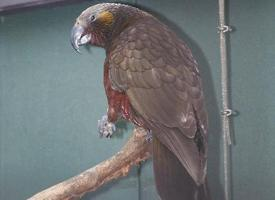
Váhy a míry
| Délka | od 14 do 18 mm |
|---|
Popis zvířete
The Summer chafer, scientifically known as Amphimallon solstitiale, is a beetle belonging to the Scarabaeidae family, which encompasses a wide array of beetles including the well-known scarabs of ancient Egyptian lore. This beetle is particularly prevalent throughout Europe and is especially noticeable during the warm summer months, hence its common name.Adult Summer chafers are medium-sized beetles, typically measuring between 14 to 18 millimeters in length. They possess a robust and somewhat oval-shaped body, which is covered in a fine layer of hair-like setae. The coloration of these beetles can vary slightly, but they are generally characterized by a warm, golden-brown hue that can sometimes appear more reddish or yellowish depending on the light and individual variation.
One of the most distinctive features of the Summer chafer is its pronotum, which is the shield-like structure that covers the thorax. The pronotum is often a darker shade of brown compared to the rest of the body and is relatively smooth, with a slightly convex shape that adds to the beetle's rounded appearance. The elytra, or the hardened forewings, are ridged with longitudinal striations that are typical of many beetles. These elytra protect the delicate flight wings underneath, which the beetle unfolds when it takes to the air on warm summer evenings.
The head of the Summer chafer is relatively small in proportion to its body and features a pair of short, clubbed antennae. These antennae are highly sensitive and play a crucial role in the beetle's ability to navigate its environment and locate potential mates. The compound eyes are relatively small but capable of detecting movement and changes in light intensity.
Summer chafers are also equipped with strong, digging legs, which are particularly adapted for life underground during their larval stage. The larvae, commonly known as "white grubs," are C-shaped and have a creamy white body with a distinct, brownish head capsule. They can reach sizes of up to 30 millimeters and are known for their voracious appetites, feeding on the roots of grasses and other plants. This feeding habit can sometimes make them a pest in gardens and agricultural fields.
The life cycle of the Summer chafer begins with females laying their eggs in the soil. After hatching, the larvae will spend one to three years developing underground, depending on environmental conditions. They will then pupate, transforming into the adult form, and emerge from the soil to mate and continue the cycle.
During the mating season, which typically peaks around the time of the summer solstice (hence the species' scientific name), the adults are most active at dusk. They are relatively poor fliers and are often seen clumsily buzzing around trees, shrubs, and grassy areas, attracted to lights and the company of other chafers. The adult beetles feed on the foliage of a variety of plants but are rarely considered significant pests.
The Summer chafer plays an important role in the ecosystem as both a pollinator and as a source of food for predators, including birds and small mammals. Despite their occasional status as pests, these beetles are an integral part of the natural environment and contribute to the biodiversity of the regions they inhabit.
Podobná zvířata
Nové fotografie zvířat
Top 10 zvířat
- Dolphin gull (Leucophaeus scoresbii)
- Japanese macaque (Macaca fuscata)
- Stone loach (Barbatula barbatula)
- Greek tortoise (Testudo graeca)
- Galápagos tortoise (Geochelone nigra complex)
- Diana monkey (Cercopithecus diana)
- Russian tortoise (Testudo horsfieldii)
- Moustached guenon (Cercopithecus cephus)
- Galápagos penguin (Spheniscus mendiculus)
- Common flying dragon (Draco volans)


